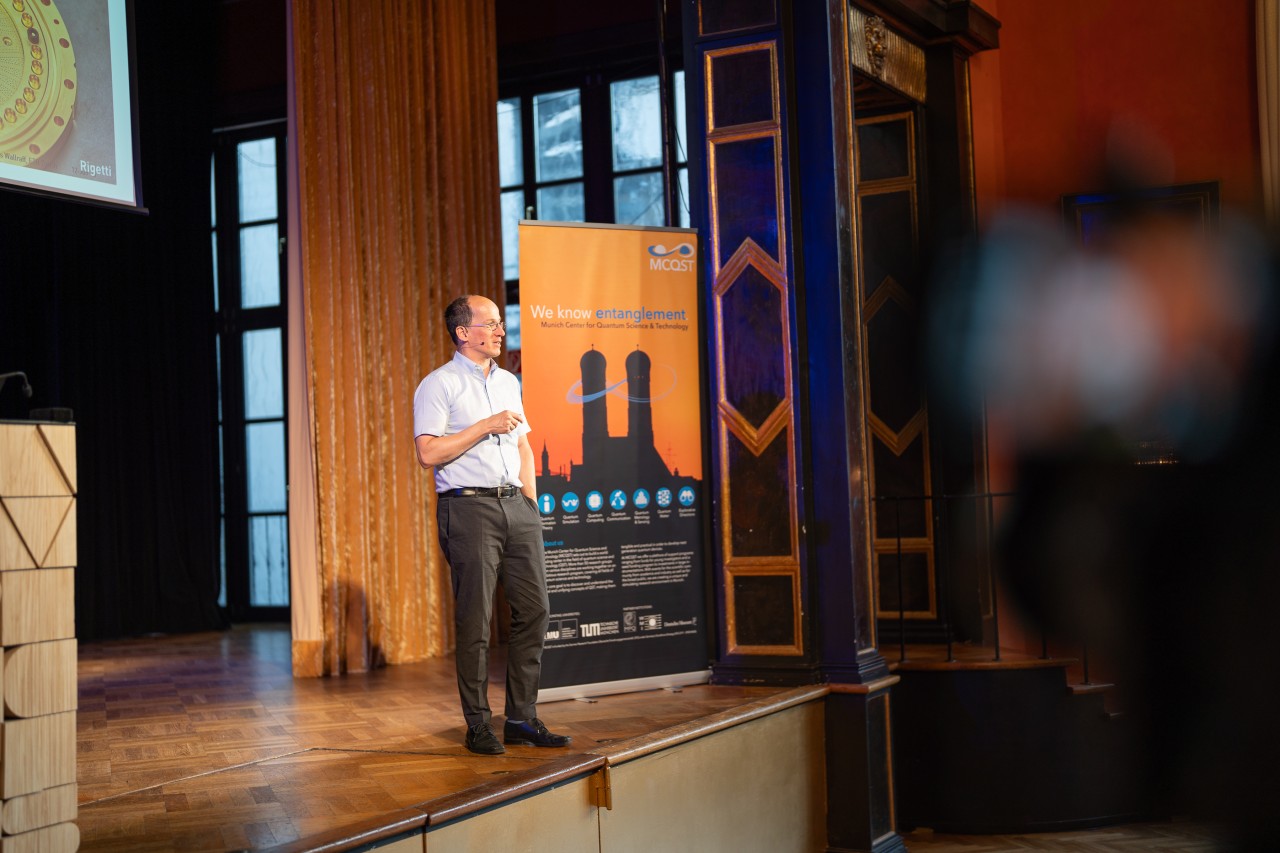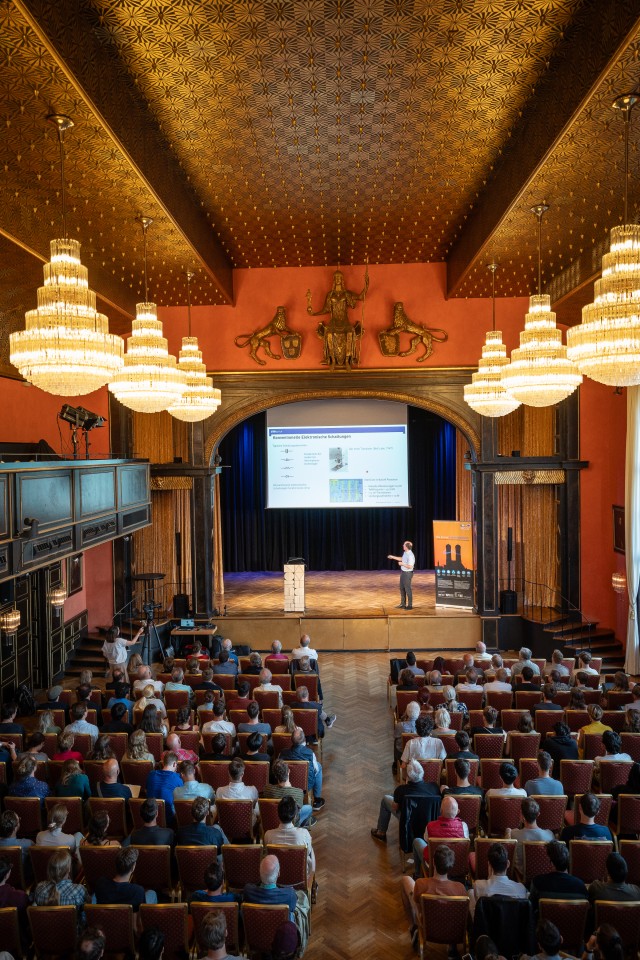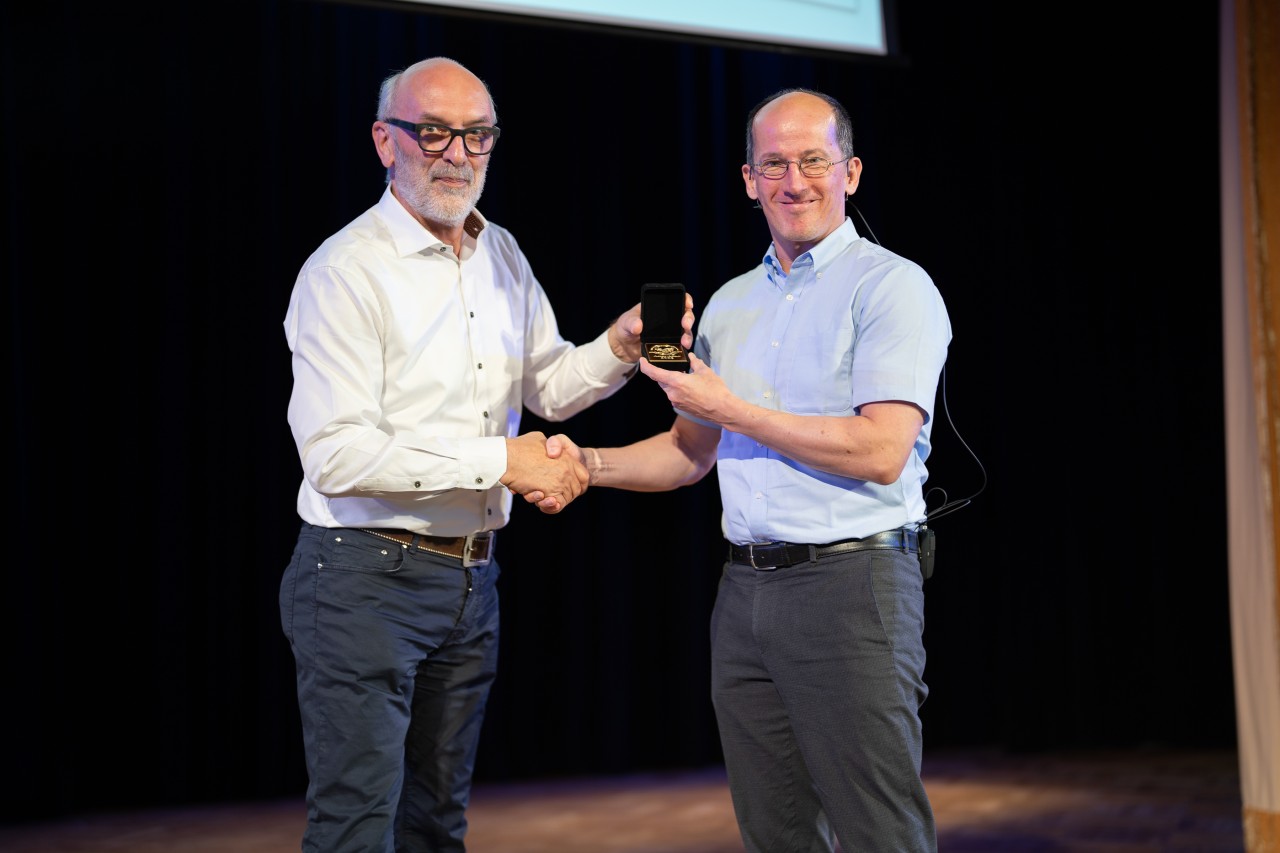MCQST awarded physicist Andreas Wallraff the Distinguished Lecturer award. During his visit, we discussed research breakthroughs, the potential of quantum computing, exploring his perseverance, and passion for science communication.
Perhaps the story of Andreas Wallraff should begin with a cable. 30 meters long and laid in the basement of his institute on the ETH Zurich campus, it connects two of his scientific laboratories. As the Zurich quantum physicist tells it, a colleague recently described it as the most expensive coaxial cable in the world. "A theoretical physicist, of course," Wallraff says with a laugh. You can watch the cable on YouTube, and if you do, it will quickly change what you think you know about electrical connections. The camera moves over thick, silver tubes for longer than a minute. Inside the tubes, but not seen in the film, are aluminum waveguides, cooled down to temperatures of minus 273.15 degrees Celsius, near absolute zero, and shielded from thermal radiation by several layers of octagonal copper shields. It is the only cable of its kind in the world.
Something physicists have tried to prove for more than fifty years
Even the short panning shot shows that Wallraff and his team are definitely at least a little proud of their development. It was recently a not-insignificant part of a spectacular experiment in quantum mechanics published in the journal Nature. It dealt with the nature of quantum particles, about exceedingly fundamental things, and about the loophole-free proof of the Bell inequality. Wallraff's group was, for the first time, able to prove with superconducting circuits that distant, quantum mechanical objects can be much more strongly correlated than is possible with classical systems. This is something physicists have been trying to prove for more than fifty years. It even won American physicist John Clauser the Nobel Prize last year, but still with certain assumptions, i.e. not totally loophole-free.
 © C. Hohmann / MCQST
© C. Hohmann / MCQST Hence, Andreas Wallraff, born in 1971, is definitely a heavyweight in quantum research, and one of the most important quantum researchers in Switzerland. The German physicist has been Professor for Solid State Physics at ETH Zurich since 2006. He also now heads the "Center for the Development of Quantum Computers" in Zurich, and is involved in the European quantum flagship project "OpenSuperQ”. Wallraff is used to large-scale projects. For quantum computers, he relies on superconducting circuits when it comes to the computing quantum bits (qubits for short). This is an idea that has now been put to use in the Bell test. "We started planning more than ten years ago, and have had some setbacks," he says. This made him even prouder when it finally worked.
"This perseverance is what distinguishes our group."
During the interview in Munich, where he is visiting the MCQST Cluster of Excellence for three days, Wallraff talked not only about his successes, but also about the fact that a few years ago, he was also about to stop building the cable. Five meters had been created at that time, and the principle of cooling was understood. But then came the news from Delft that a group led by physicist Ronald Hanson had verified violation of the Bell inequality using two electrons entangled over a distance of 1.3 kilometers. While loophole-free, it did not have enough significance to be beyond all doubt. "At the time, we were already starting to consider whether we should keep going," Wallraff says. “After all, it not only cost a lot of money, but also took a lot of time.”
However, that's when the attitude that characterizes Wallraff's work came through. "We're good at finishing things once we start them," he says. "This perseverance is what distinguishes our group – where others stop, we keep going." His projects often last seven or eight years. In addition to a good plan, you also need perseverance, explains Wallraff.
Someone who loves competition
You can tell that Andreas Wallraff really loves competition. He is like a mid-distance runner. And he is no stranger to the athletic mindset; as a passionate ice hockey player – in his youth, he played for the Cologne Sharks in Germany, and he still plays today – he knows the challenges of competition.
And he has just won a scientific competition. The subject was quantum mechanics; the competitors are quite well-known and have a lot of money. Beating out high-tech giants Google and IBM, his team was able to prove that errors in a quantum computer working with qubits can be corrected automatically. Wallraff's proof was an extremely important step in terms of technology, because so far, quantum computers are still very error-prone. "It's crucial to keep the errors small; to do that, we have to learn to control the qubits extremely well," Wallraff says. "It's a breakthrough on the path to creating a practical quantum computer."
Calculating complex molecules
 © C. Hohmann / MCQST
© C. Hohmann / MCQST Audience sitting in aneorenaissance hall for a public talk on quantum computing. © C. Hohmann / MCQST
Despite all these successes, the path to making a universal quantum computer a reality is still long. "We want to work on this path with real intensity," says Wallraff. For instance, he considers the potential applications in chemistry, pharmaceuticals, or biotechnology to be extremely interesting. "There are types of problems that are difficult to solve on conventional computers because the complexity grows quickly," Wallraff explains. "To do that, we need innovative quantum mechanical simulation machines." It is imaginable, for instance, for them to be used to develop catalysts or medicines or, more generally, complex molecules from chemistry with exciting new properties. Despite these immense opportunities, you have to be patient and be able to handle setbacks.
It was precisely this quality that set Wallraff apart during his studies at RWTH Aachen University and Imperial College in London. "While I’d always wanted to be a quantum physicist, I first worked on atomic and laser physics, and only later on superconducting electronic circuits." However, he never lost sight of the most important quantum mechanical work. For example, that of then-Berkeley physicists Michel Devoret and John Martinis, who first proved back in the mid-1980s that superconducting circuits are indeed quantum mechanical systems. "But at the time, there were no applications for this phenomenon," Wallraff explains. "I then tried to replicate their experiments during my studies. I wanted to experience these strange things from quantum physics. There's a difference between reading about quantum physics in a book and trying things yourself in the lab." He found his way into the world of quantum computing through superconducting circuits. Computers had interested him since he was a teenager. "I had the first Apple 2+ or the first Macs at home," Wallraff says.
The first qubit in a superconducting circuit
For the past two decades or so, advances in the fundamentals of feasible quantum technologies have occurred at an ever-increasing rate. In 1999, Japanese physicist Yasunobu Nakamura generated a superposition state in a superconducting circuit for the first time. It was the first qubit on this basis. Finally, Wallraff also got involved in this field. While he was getting his postdoctoral degree at Yale University in the United States, he picked up an idea from Serge Haroche, who later won the Nobel Prize in Physics. But with an important modification: Wallraff succeeded in making single photons interact with qubits in superconducting circuits; he created coherence in superconducting circuits using microwave photons. "It's still my most cited work to this day," Wallraff says. It has created a separate field in physics called circuit QED. "The concept is now used in all superconducting circuits, not just our own, but also at IBM or Google."
During his talk at the Munich Künstlerhaus, he told the packed room how important perseverance is in his field. Error correction and the race against IBM is just one example. On the hall screen, the physicist showed the design of his corrector chip with a total of 17 qubits. The design turned out to be so elegant that the QuDevils, Wallraff's soccer team at ETH Zurich that is participating in an internal tournament this summer, had the logo printed on their white-and-red jerseys.
Tweeting to share knowledge
Such seemingly small gestures show how important it is to the physicist to create connections from the world of quanta to the real world. He not only wants to do research, but also show a wider audience all the mysterious things that are happening. Wallraff not only tweets – " I am now the most successful physicist at ETH in the field," he says with a laugh – but also gives many lectures like the one in Munich. He knows how important it is to be understood by a wider audience. Tweets about the latest articles or conference papers can be found next to comments about ice hockey or pictures about the home of quantum physics legend Erwin Schrödinger with a metal cat symbolizing his thought experiment, in which he explains concepts in quantum mechanics such as the principle of superposition in a macroscopic world, while at the same time demonstrating the problems of illustrating them.
In his Munich lecture, Wallraff used a Swiss franc which, in a state of superposition, would also be in two contradictory states, i.e. would show both heads and tails. Quantum mechanical qubits in new quantum computers also operate according to this principle of superposition of two states, 0 and 1.
 © C. Hohmann / MCQST
© C. Hohmann / MCQST "There are a lot of exciting things about quantum mechanics in books, about entanglement and superposition. But I want to understand how it works, I want to control the states."
One can sense the joy he feels when trying to communicate quantum mechanics to a broader audience. He has also been awarded Distinguished Lecturer status by MCQST for this work. Wallraff says that, even as a student, he wanted to understand everything down to the last detail. To prove it, he takes the glass of water on the table in front of him during the conversation and pushes it towards the edge of the table. "That's what kids do – they push the glass to the edge and see if and when it falls." Wallraff caught his glass on time. “That is gravitation,” he says. And this is how you have to proceed in quantum physics as well. "There are a lot of exciting things about quantum mechanics in books, about entanglement and superposition," Wallraff says. "But I want to understand how it works, I want to control the states." And you need a lot of staying power to do that.
Public Lecture
Andreas Wallraff was awarded MCQST Distinguished Lecturer in 2023. As part of this program, he gave a public lecture (in German) at the Munich Künstlerhaus in June 2023, which you can watch below.